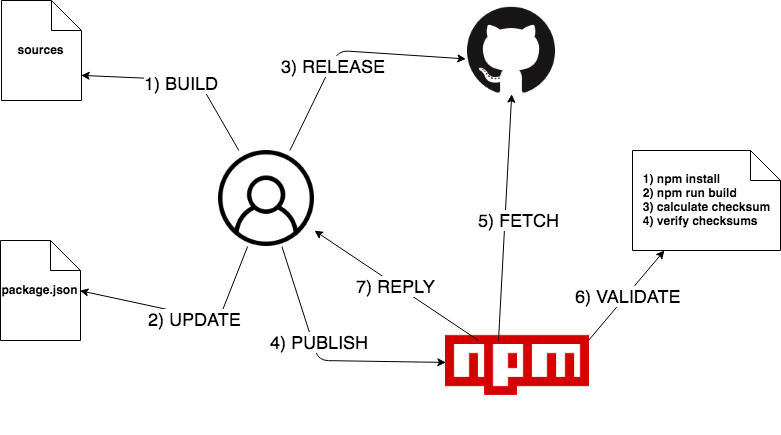Latest news about Bitcoin and all cryptocurrencies. Your daily crypto news habit.
SNPM is a Proof of Concept built to ensure consistency between what is published on the NPM registry and its open source counterpart on public repositories, like Github.
At the end of April, Node.js 10 was released and so NPM announced npm@6.One of the major feature introduced with version 6 is about security: I’m talking about npm audit.This new command allows the user to perform an “assessment of package dependencies for security vulnerabilities helping the user to protect their package’s users from known vulnerabilities that could cause data loss, service outages, unauthorized access to sensitive information and so on”.That’s a huge improvement that NPM team has done for the entire community.
However, I think they didn’t catch the real problem.
A major security leak
At the beginning of 2018 @david.gilbertson was publishing what would become a stunning article about the fragility of NPM ecosystem security.What David did then was exposing a major security leak of NPM model.
In few words: what is published on the NPM registry may differ from what you see on Github.
Usually, a NPM package has its source code published on Github (or hosted on another public repository), giving users the ability to verify the project and contribute.However, when someone publishes a new package on NPM no one can say that what has been uploaded is exactly what has been published on Github.This means that you can upload a malicious code on NPM and then publish a different harmless code on Github, and users won’t realize it. Not immediately, at least.
This weakens the foundation of the Open Source ~ Paolo Sinelli
How can we trust a system that allows users to share closed source code without any way to verify its authenticity?
Funny fact: in these very days, a backdoor has been spotted on a Python package named ssh-decorator.Someone found it inside the source code and alerted users so the compromised package was finally taken down.This is the proof that having access to the source code allows the community to prevent and cure bad situations.
SNPM for the rescue
So, After David’s article, I started creating a Proof of Concept to avoid these situations with NPM.It is called Secure NPM (SNPM) and I’ll try to explain how it works in few simple steps.
Disclaimer: SNPM is calibrated for compiled (binaries) and transpiled packages but it can be adapted also for plain packages.
First, when the author wants to publish a new version of their package, they build the sources and calculates the checksum of the compiled output.
Then, they need to update the package.json with the new version and the checksum.CommonJS provides a field called checksums where the author can store checksums of its code.
Now they can release it on Github (or another public repo) with a new tag.
 Release on a public repository
Release on a public repository
At this point, they can publish it on NPM via SNPM: it will send just few data, such as the package version, the public repository url and the checksum.This differ from “npm publish” command because it won’t send the whole source code, nor the compiled files, but just those three information above.
NPM is now in charge of fetching the released version from the public repo.
NPM can now validate the checksum by performing a series of actions:
- installing all the dependencies, via npm install
- building the sources, via npm run build
- calculating the checksum of the compiled files
- verifying the checksums
 Reproduce and verify the checksum
Reproduce and verify the checksum
At this point, NPM has all the information to reply with a successful answer or with an error.
That’s it.Following the summarized algorithm:
The main difference between NPM and SNPM is that (compiled) sources are not uploaded any more from the (untrusted) author but downloaded directly from the public repo (trusted), where everyone can reproduce the same procedure and verify the checksum.
Conclusions
Unfortunately, npm audit doesn’t solve this major leak and the issue is still open, especially for binaries and minified Javascript.We (as a community) must get verified and validated packages.
Anyway, I want to thank the NPM team for their awesome work and I hope this article will push them to improve the security of one of the best package manager ever developed.
Secure NPM was originally published in Hacker Noon on Medium, where people are continuing the conversation by highlighting and responding to this story.
Disclaimer
The views and opinions expressed in this article are solely those of the authors and do not reflect the views of Bitcoin Insider. Every investment and trading move involves risk - this is especially true for cryptocurrencies given their volatility. We strongly advise our readers to conduct their own research when making a decision.






